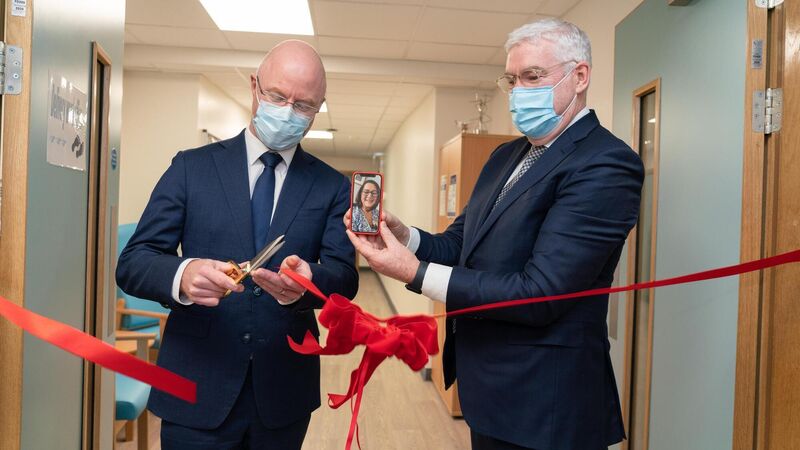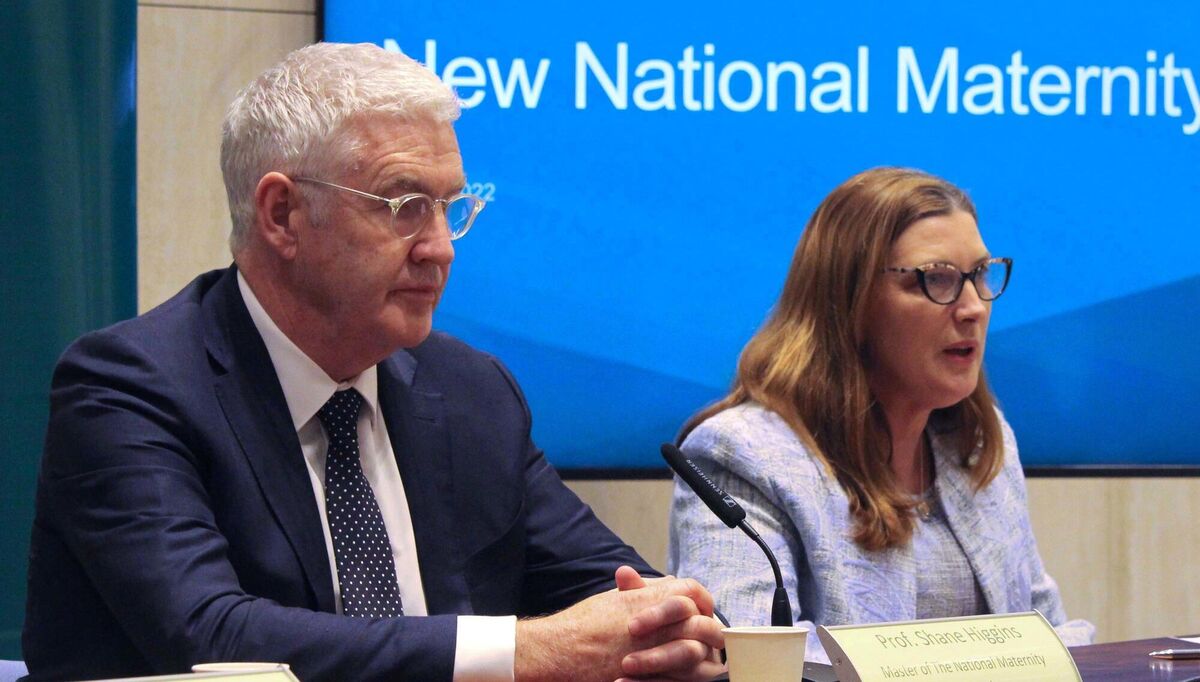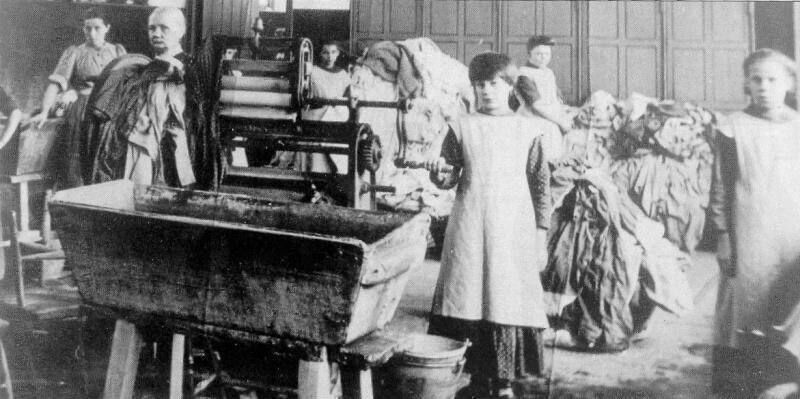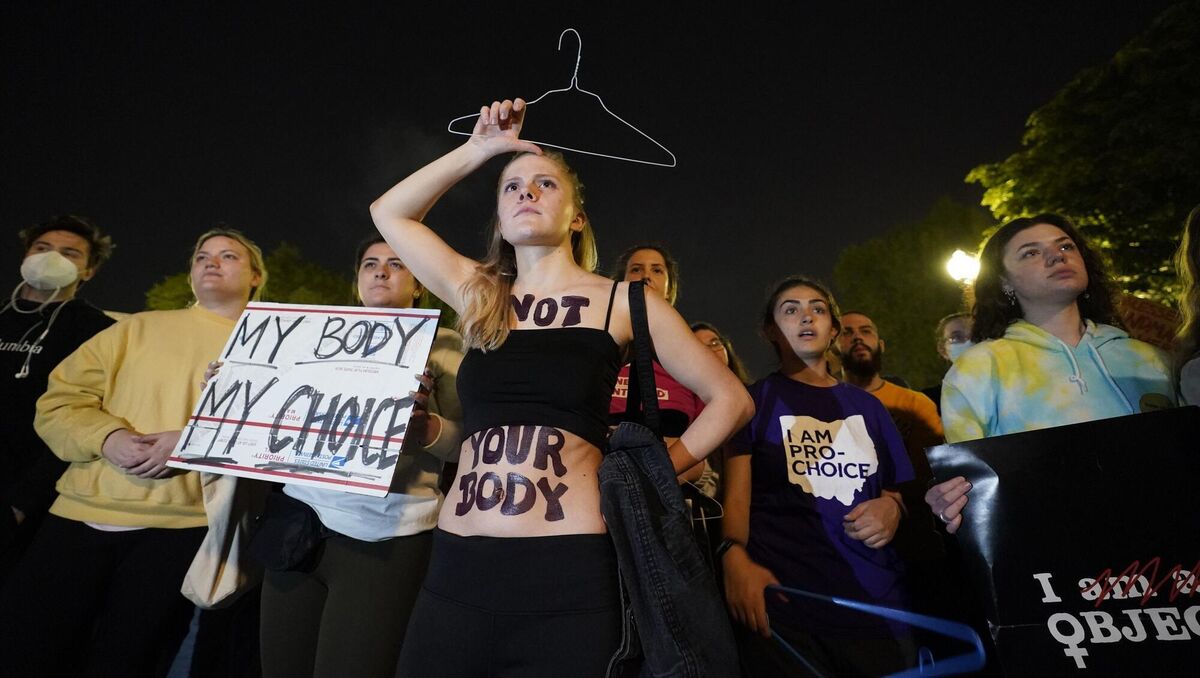Alison O'Connor: Forget phantom Catholic threat and just get National Maternity Hospital built

Health Minister Stephen Donnelly officially opens refurbished labour and birthing unit at Holles Street on March 7, 2022. He is pictured with Professor Shane Higgins holding a videocall with labour and birthing unit manager Martina Cronin. Picture: Barry Cronin
We are mired in Post Traumatic Catholic Syndrome (PTCS) — a condition resulting in very significant damage being done to the women of Ireland.
As readers of last week’s column will be aware, my own child-bearing days are behind me. However, the way things are looking for the new National Maternity Hospital — mired in controversy for years — I could be well into potential grandparenthood before this much-needed facility is built.
It is as if a fever has taken hold in relation to the new hospital — where logic is being cast aside because of this PTCS.
Irish women desperately need this new facility, giving birth as they currently are in workhouse-like conditions in Holles Street. You don’t even have to go past the reception desk there to know this building wouldn’t pass muster for an inspection as a food processing facility, let alone somewhere babies are born and a host of other female-related health services are carried out.
If you’ve ever been a patient or visited anyone, you’ll immediately be struck by how inadequate it is — up to 15 women together in ancient 'Nightingale' wards.
By its nature, childbirth is a process where there is little privacy. But in this hospital, even the time before and after the intense business of baby delivery, it’s a case of cheek-by-jowl.
But, worse than that, you could be stuck in a loo queue while actually in labour. It hardly bears thinking about, but women are experiencing this every day.
It is no surprise then that the current master of the hospital (Professor Shane Higgins) and the previous one (Dr Rhona Mahony) and the one before that (Dr Michael Robson) and the one before that (Professor Declan Keane), as well as so many of the other doctors and midwives, want to get the hell out of there to a new facility where there would be over 200 en suite rooms — so a woman would have her own room whether a public or a private patient. It would be co-located with St Vincent’s Hospital at Elm Park and geographically in the centre of the community it serves.
At a press conference with Health Minister Stephen Donnelly on Tuesday, current master Shane Higgins (masters serve a term of seven years) said a new National Maternity Hospital building was a clinical imperative. The Holles Street building was substandard and a “constant building site”. The director of midwifery at Holles St, Mary Brosnan, was also in attendance and backed the move to the St Vincent’s site.

Women in the Cork region, for instance, will know the benefits of giving birth in a new facility such as the CUMH. But it’s a different story in Dublin.
I’ve calculated previously that the three maternity hospitals in the capital — the Rotunda and the Coombe included — have a combined age of almost 450 years.
As things stand, the State will own this new building where the hospital is to be located and there will be a 299-year lease on the land on which the building stands. As Taoiseach Micheál Martin told the Dáil on Wednesday: “A 300-year lease at a tenner a year… To me, that is public ownership, by any objective analysis.”
The immediate need is so acute that we need to forge ahead.
Last week, the Religious Sisters of Charity transferred their shareholding in the company that owns the land to a charitable trust, which will then lease it to the State for that period. The nuns have made clear that they are out.
It’s understandable how easily people have been spooked. Even a casual observer of how Irish women have been treated over the years would be appalled at what we might broadly call our reproductive history, so heavily influenced by Catholic ethos — everything from symphysiotomy to Magdalene laundries, mother and baby homes, to abortion bans.

The PTCS is understandably strong, but we mustn’t be blinded by it.
It was so disappointing to see the decision by Cabinet on Tuesday not to finally give approval to the St Vincent’s campus move and delaying the decision by a further two weeks.
This project has been in the works for almost a decade and opposition has been very impressively led by Dr Peter Boylan.
Dr Boylan did magnificent work for the Yes campaign in the abortion referendum.
But he retired from Holles St in 2016. His term as Master of Holles St began in 1991, and during that time he brought about great and much-needed change. But that tenure has ended.
In the week that we hear the extremely distressing news from leaked documents that the US Supreme Court is set to repeal the 1973 Roe vs Wade decision that guaranteed a woman’s right to abortion, it’s understandable to be more paranoid about abortion availability.

Indeed, the fight for abortion here was, at times, vicious and lasted for decades, but the battle was won.
Our politics or, indeed, our justice system is not run along the same lines as the US. Abortion is currently the law of the land. A future conservative-minded health minister would not be able to take unilateral action to change that.
It is worth reflecting on how daft it would be if, back in 1973, a hugely significant healthcare facility for women in the US was not built on the principle that half a century later the right to abortion would be threatened? It’s clear to see just who would have missed out there.
As Rhona Mahony has stated on a couple of occasions this week, there is a considerable level of disinformation in circulation about this project, and that has only served to fuel the suspicion and mistrust.
In truth, the way this thing is currently stacked, the fear is a phantom Catholic threat and it is serving to actually damage Irish women.
Opposition parties need to back off with their opportunistic objections. The Government needs to have the courage of its conviction and get the project started. Just build it.






